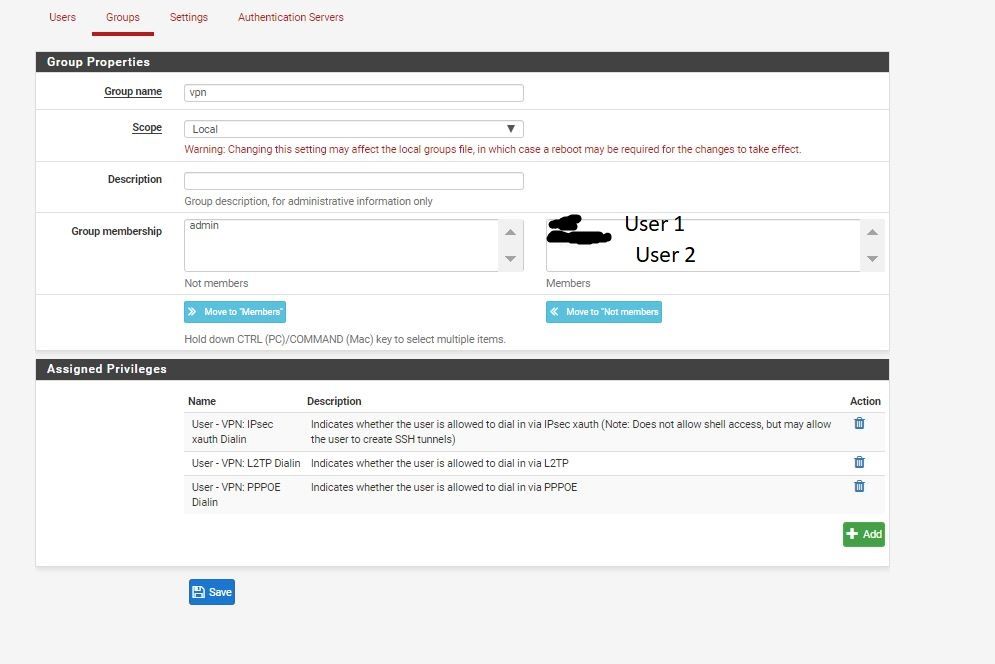

XAuth can be used in addition to or in place of IPsec phase 1 peer options to provide access security through an LDAP or RADIUS authentication server.
#Newshosting vpn authentication failed password
It then forwards the user’s credentials (the password is encrypted) to an external RADIUS or LDAP server for verification. The FortiGate unit asks the user for a username and password. The peertype and usrgrp options configure user group-based authentication.Ĭonfig vpn ipsec phase1 edit office_vpn set interface port1 set type dynamic set psksecret yORRAzltNGhzgtV32jend set proposal 3des-sha1 aes128-sha1 set peertype dialup set usrgrp Group1Įxtended Authentication (XAuth) increases security by requiring additional user authentication information in a separate exchange at the end of the VPN Phase 1 negotiation. To configure user group authentication for dialup IPsec – CLI example:
Select Next and continue configure other VPN parameters as needed. The listed user groups contain only users with passwords on the FortiGate unit. Select the user group that is to be allowed access to the VPN. Select Pre-shared Key and enter the pre-shared key. List of authentication methods available for users. Go to VPN > IPsec Wizard, select Remote Access, choose a name for the VPN, and enter the following information. Create a user group with Type set to Firewall and add them to it.įor more information, see Users and user groups on page 49 Configure the dialup users who are permitted to use this VPN. To configure user group authentication for dialup IPsec – web-based manager: To authenticate users using a RADIUS or LDAP server, you must configure XAUTH settings. The user account name is the peer ID and the password is the pre-shared key.Īuthentication through user groups is supported for groups containing only local users. Configuring authentication of remote IPsec VPN usersĪn IPsec VPN on a FortiGate unit can authenticate remote users through a dialup group. If the idle-timeout is not set to the infinite value, the system will log out if it reaches the limit set, regardless of the auth-timeout setting. The value for idle-timeout has to be set to 0 also, so that the client does not time out if the maximum idle time is reached. To fully take advantage of this setting, VPN authentication If you set the authentication timeout (auth-timeout) to 0 when you configure the timeout settings, the remote client does not have to re-authenticate unless they log out of the system. For example, to change this timeout to one hour, you would enter:Ĭonfig vpn ssl settings set auth-timeout 3600 The maximum time is 72 hours (259 200 seconds). You can change it only in the CLI, and the time entered must be in seconds. Configuring authentication timeoutīy default, the SSL VPN authentication expires after 8 hours (28 800 seconds). Configure a security policy with the user groups you created for SSL VPN users. Optionally, set inactivity and authentication timeouts. Create one or more user groups for SSL VPN users. The general procedure for authenticating SSL VPN users is: Configuring authentication of SSL VPN users 
You cannot authenticate these types of users using a RADIUS or LDAP server. If you create a user group for dialup IPsec clients or peers that have unique peer IDs, their user accounts must be stored locally on the FortiGate unit. You must create user accounts and user groups before performing the procedures in this section. L an IPsec VPN that authenticates users using dialup groups l a dialup IPsec VPN that uses XAUTH authentication (Phase 1) Authentication based on user groups applies to: l SSL VPNs l PPTP and L2TP VPNs All VPN configurations require users to authenticate.






 0 kommentar(er)
0 kommentar(er)
